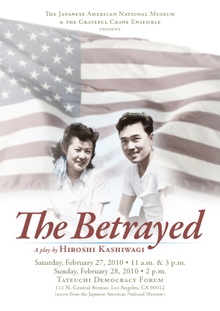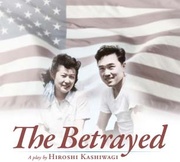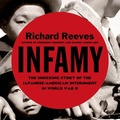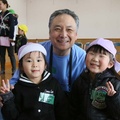“Tule Lake, Tule Lake—that
was a name I dared not mention
spoken warily, always with
hesitation, never voluntarily...”
—an excerpt from “A Meeting at Tule Lake,” a poem by Nisei writer Hiroshi Kashiwagi
Growing up in San Francisco, I remember hearing my father first talk about camp at a community event held at the Buddhist Church in 1975. Unlike other Nisei, who preferred to keep the camp story buried deeply in the distant past, Hiroshi Kashiwagi, my dad, was out there telling it like it was—and he didn’t pull any punches.
His speeches were fiery, his poems angry and his plays about camp revealed the injustice and the dark side of our nation’s history, and how this darkness blanketed an entire community.
His was a voice that needed to be heard, especially by young, college-aged Sansei coming of age in the late 60s and early 70’s, many questioning their identity and confused as Hell about this thing called “camp.” Their parents certainly didn’t talk about it, and if they did, many would laugh it off as a “good time” experience.
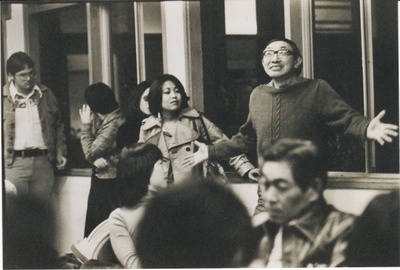
Hiroshi Kashiwagi at one of his play performances in San Francisco, mid 1970s. Photo by Isao Tanaka. Courtesy of Soji Kashiwagi.
But deep down these Sansei knew that something terrible had happened, and through my father and a few other Nisei like Edison Uno in San Francisco and Sue Kunitomi Embrey in Los Angeles, all of a sudden they were hearing the truth, from people who were there. It made them angry, and inspired them to fight.
And yet, despite all the time my father spent talking about camp, there were certain things he never talked about: Tule Lake, being a No-No Boy and renouncing his U.S. citizenship. Not to community folk, not to friends, and not to us in his family.
As he writes in his poem above, it was something he “dared not mention.”
Safe to say that “Tule Lake” and “No No Boy” are like dirty words in the Japanese American community. “No No Boys” were those so called “trouble-makers” and “disloyals” who either answered “No-No” or refused to answer the infamous government-issued loyalty questions #27 and #28. And Tule Lake was the camp where the government segregated them.
Here are the questions imposed upon every inmate, age 17 years of age and older:
Question 27
Are you willing to serve in the armed forces of the United States on combat duty wherever ordered?
Question 28
Will you swear unqualified allegiance to the United States of America and faithfully defend the United States from any and all attacks by foreign or domestic forces and forswear any form of allegiance or obedience to the Japanese Emperor or any other foreign government, power, or organization?
Of all the things that took place back then, these two questions were without a doubt the most divisive, painful and insulting things to happen to them in camp. Families were torn apart. Friendships ended. Long-time relationships—severed. All of a sudden, the community was split in two. Those who answered “Yes-Yes” were declared “loyal” to the U.S., and many went on to serve in the military, or were released from camp and went off to college or to jobs in the Midwest or back East. Those who answered “No-No,” qualified their answers or refused to answer, were branded “disloyal” to the only country they knew, and sent to Tule Lake.
In all, some 12,000 “No-No’s” were shipped from the nine other camps to what became the “Tule Lake Segregation Center.” That was about 10 percent of the JA population at the time. While they were there, 5,461 renounced their U.S. citizenship under duress, and in protest of the shabby treatment they were receiving.
The fall-out from all of this? Those who answered “Yes-Yes” and went on to serve with distinction in the 100th/442nd/MIS have been hailed as heroes in our community, and deservedly so. No doubt about it. Their stories have been told and retold, and need to continue to be told so that the world will know about the men who “went for broke.”
However, for those who answered “No-No,” the stigma attached to being called “disloyal” and one of those “troublemakers” has never gone away, and tragically, has become the accepted truth in our community. This is thanks to much reinforcement from individuals and groups within the community who vehemently disagreed with their stand, and have done their best to denigrate or simply ignore those who chose to dissent and protest.
It’s a classic example of the “good JA’s” versus the “bad JA’s”
The “bad JA’s” have been ignored, shunned and shamed into silence, and unfortunately, they are so entrenched that many refuse to talk even to this day, and even more have already gone to their graves, with this burden of shame still on their shoulders.
In this context, you have my father.
When I was in high school, I used to work part-time for a Chinese American newspaper located in San Francisco’s Chinatown. One of the assignments I was given was to go and write something on the San Francisco Presidio. What exactly I was supposed to write about I don’t remember. What I do remember is walking into the Presidio Army Museum, and meeting a man named Eric Saul, and that’s where I first learned about the amazing and heroic story of the 100th/442nd Regimental Combat Team.
Saul had done extensive research on the subject, and was an expert on everything about the 100th/442nd. That afternoon, he proceeded to tell me incredible war story after war story. The Rescue of the Lost Battalion. The Breaking of the Gothic Line. And I wrote about it all.
In college, I wrote about the 442nd/100th again for the campus magazine, this time going into even greater detail having interviewed several of the 442nd vets.
Still young and caught up in the heroics of it all, I remember feeling an enormous pride in being Japanese American, thanks to the deeds of the5se men. And then I looked at my dad, and wondered why he wasn’t one of them.
He never said. I never asked.
To his great credit, he also never once discouraged me from telling the 442nd story, or tried to tell me “the other side of the story.” Maybe he felt like I wouldn’t understand. Probably he just didn’t want to talk about it.
Fast forward to 2003, and our theater group, the Grateful Crane Ensemble, produced a show I wrote called “The Camp Dance: The Music & The Memories.” And for the next several years, we would take this show about the high school dances the Nisei used to have behind barbed wire to places across California and the country. And within this show, there’s a moment where we honor the 100th/442nd and MIS by asking any vets in our audience to stand and receive a rousing applause from our grateful community.
The vets in attendance would stand, and receive their due recognition.
Once again, my father remained silent.
Until now.
Because now, in 2010, on February 27 and 28 at the Japanese American National Museum’s Tateuchi Democracy Forum in Los Angeles’ Little Tokyo, we will hear the words of my father performed for all to see in his play called “The Betrayed.”
Presented by the Grateful Crane Ensemble and JANM, the play is a love story set at Tule Lake in 1943 and focuses on Tak, a country boy from California who falls in love with Grace, a city girl from Seattle. The two meet at Tule Lake, but are soon torn apart over the infamous loyalty questions. They end up going their separate ways, and don’t see each other until 40 years later, when they reunite and discover how their decisions in camp back then affected them for the rest of their lives.
Through his play, my father’s message is one of hope—a genuine hope for reconciliation between Tak and Grace, and by extension, for our community. After 65 years, it is much needed—and never too late.
Early indications are telling us this may be true. Interest in this subject matter is so high that our Sunday, 2/28 show at 2 p.m. sold out about a month before the performance. This says to me that people in our community are at least open and ready to hear this story. Twenty years ago, a reading of essentially the same play was done at the East West Players, and only Heart Mountain resister Frank Emi and a few others showed up.
But today, 20 years later, much has changed. So many who lived through camp and WWII are now gone. Those still alive are 20 years older, and in their 80’s and 90s. Perhaps they are curious to know how we are going to handle this subject long thought to be “untouchable” and “taboo” in our community. Perhaps some of their views have softened over the years. All we know for sure is that they are coming, and now seems to be the time to finally “air this out” in public.
Of course, one play over one weekend is not going to change the world, or our community. But we have to start somewhere, and even if one person walks away with a deeper understanding of what happened and empathy for both sides of the argument then we will have achieved our goal.
Because what I have learned from attending the Tule Lake Pilgrimages with my folks in 2006, 2008 and 2009 is that there is another side of the story, and I believe it’s time for us to hear it.
And perhaps, after seeing the play, we can ask ourselves: Was it fair to “convict” those Nisei and Kibei at Tule Lake in the Nikkei Court of Public Opinion and sentence them to a lifetime stigma as “disloyals,” “troublemakers” and “cowards?” Does defending your rights as an American citizen by protesting an unconstitutional imprisonment make one “disloyal” to America?
These questions and more are addressed in the play. After 65 years of silence and after years of celebrating the heroics of the Nisei veterans, I wanted to give my father this opportunity to say to everyone through his play what he could not say to his own family, and me.
His voice, like it was back in the 1975, needs to be heard again some 35 years later, this time for a community that needs to understand and heal from its past so we can all move forward together.
All I know is after learning about and understanding the Tule Lake story, I no longer look at my dad and wonder why. I am inspired by his courage, determination and enduring spirit he showed at Tule Lake and throughout his life, and will do my best to carry on in his footsteps.
Like father, like son—there are some things we don’t say to each other. But through this article, I want to tell him, simply and sincerely:
“I am so proud and grateful to say that you are my father.”
***
The Southern California premiere of “The Betrayed” will take place on Saturday, February 27, 2010 at 11 a.m. and 3 p.m. and Sunday, February 28, 2010 at 2 p.m. (sold out) at the Tateuchi Democracy Forum, 111 N. Central Avenue (across from the Japanese American National Museum in Little Tokyo, downtown Los Angeles.)
The play is directed by Darrell Kunitomi, with music by Scott Nagatani. The cast includes Kurt Kuniyoshi, Helen Ota, Brian Takahashi & Diana Toshiko. For tickets and information about “The Betrayed,” call the Grateful Crane Ensemble hotline at 323/769-5503.
© 2010 Soji Kashiwagi


